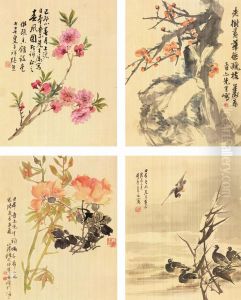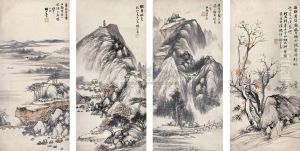Hu Gongshou Paintings
Hu Gongshou was a Chinese painter during the Ming dynasty, born in 1582. His exact date of death is not well-documented, but his artistic contributions occurred primarily during the late Ming period. Hu Gongshou was known for his landscape paintings, which often reflected the traditional Chinese style of shan shui ('mountain-water') painting, emphasizing harmony between humans and nature.
Hu Gongshou's artwork was characterized by its dynamic brushwork and use of ink wash, creating a sense of depth and texture within his landscapes. His paintings often featured mountains, rivers, trees, and sometimes included figures or structures that were in harmony with their surroundings, following the Chinese aesthetic principle that literature and painting should be integrated. This principle manifested in the form of poetic inscriptions that were often found on his works, adding a literary dimension to the visual experience.
Unfortunately, due to the historical context and the passage of time, much of Hu Gongshou's personal life and the specifics of his artistic career remain obscure. Nevertheless, his work has been preserved in various collections and studied by art historians specializing in Ming dynasty art. The appreciation for Hu Gongshou’s art continues to endure, and his paintings are considered important examples of the Ming dynasty's rich cultural and artistic heritage.





